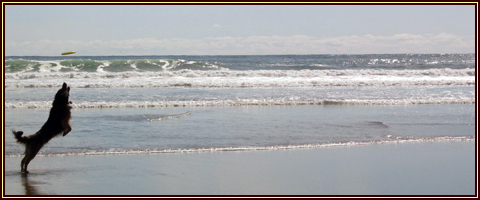Dog Food Nutrition Facts
Click here to visit Dog Food for Life
If your dog hasn’t been in the pinnacle of health lately, you might consider taking a look at his diet. Have you switched dog food brands lately? You might be surprised to learn that many commercial dog food brands are not supplying the nutrients that your dog needs to function in top health.
The first step in re-evaluating your pet’s diet is to understand which ingredients are necessary to promote good health, and which ingredients can be destructive to your dog’s health. We’re going to discuss the nutrients that your pet food should contain, as well as ingredients that are unhealthy or even harmful for your dog.
The most common nutrients your dog needs are protein, carbohydrates, fat, vitamins and minerals, as well as water. These nutrients have to be supplied in the right amounts so that they are properly digested and absorbed by the body. Remember that your dog, or any dog for that matter, is a carnivore, meaning his body mainly uses meat. Many dog foods on the market today contain large amounts of grains or vegetables, which are not nearly as beneficial to your dog as the protein found in meat. Any dog food you purchase (or make yourself) should contain, at the very least, forty percent meat. However, there are other sources, aside from meats, that dog food companies can derive the necessary protein from, such as plants and grains like corn, wheat, and soy.
The Dog Food for Life eBook contains tons of great DIY recipes for treats, everyday food, and even desserts for your dog!
Many dog food brands—even the top competitors—contain items that are not only inefficient as a source of nutrients, but down-right dangerous for your dog. If your dog’s food simply states that it contains “meat,” you might need to brace yourself for what you’re about to read next. The term “meat,” as it pertains to the dog food market could mean anything from euthanized animals from vets/shelters to road-kill. Other things to watch out for are unidentified fats, BHA and BHT, artificial colors, Menadione Sodium Bisulfate, Propylene Glycol, Brewers Rice, Cellulose, Ethoxyquin, Propyl Gallate, and Gluten.
To get a good grasp on which items make up the bulk of your dog’s food, remember that ingredients are always listed from largest percentage to smallest . If your dog’s food is primarily made up of chicken and lamb, those ingredients will be listed first, followed by the next item of significant quantity, and so on.
Now that you know what your dog’s food should consist of, take a look at the package to determine whether your dog’s diet is in need of change. If you are afraid your pet may be in poor health due to his/her diet, consult with a veterinarian immediately.
If you would like to learn more about dog food ingredients and which brands to avoid/pursue, go to Dog Food for Life.







